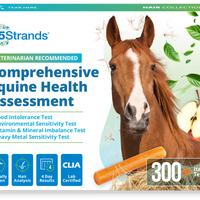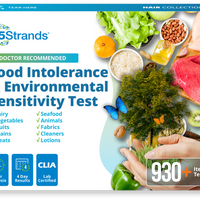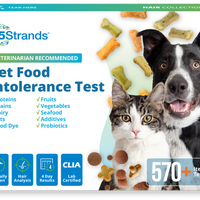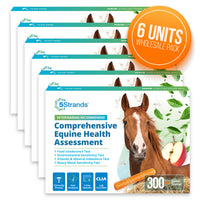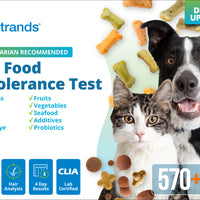Food allergies are a common and well-known term. They are just like any other allergy that involves the immune system. The body sees that the food is a harmful substance and the immune system triggers the cells to release an antibody (IgE) to neutralize the food substance or allergen. The symptoms you might experience are typically immediate and can be life threatening. What most people do not know is that only a small percentage of the population suffers from a true food allergy. So what are causing your symptoms then?
Have You Ever Heard of a FOOD INTOLERANCE?
A food intolerance is caused by the body having difficulty digesting a particular food item. Food intolerances are WAY more common than food allergies. They are different from a food allergy because it does not involve the immune system. The most common reason a person develops an intolerance is because the body is lacking the digestive enzymes to properly digest certain foods. In addition, a person could be sensitive to natural toxins in foods that are not cooked properly. A person could also be sensitive to a natural chemical in a certain food. The presence of salicylates that occurs in many foods can irritate the digestive tract in many people. Unfortunately, a large majority of people just have difficulty digesting a food’s protein source.
Just because a food intolerance mainly stems from the digestive system, it does not mean that all the symptoms will be digestive in nature. Many of the symptoms will manifest in other areas of the body.
What Are The Symptoms of a Food Intolerance?
Many of the symptoms of a food intolerance overlap with the symptoms of a true allergy. The biggest distinction between the two is that with a true allergy, the reaction time is more immediate and it can be life threatening. This means it can result in anaphylaxis or even death. With a food intolerance, the onset of the symptoms is not immediate. It can take anywhere from 30 minutes to 2 - 3 days before the symptoms manifest. This can make it difficult to pinpoint the food that is causing issues because many people only take into consideration what they ate as their last meal, not what they ate a few hours ago, or even days ago.
While food intolerances are never life threatening, the symptoms are less than pleasant. Struggling with food intolerance symptoms can completely alter how you feel. You do not need to accept these symptoms as your “norm.”
The most frequently experienced symptoms are as follows:
1) frequent gas, bloating, or indigestion
2) headache
3) joint pain
4) constipation or diarrhea
5) fatigue
6) lack of focus
7) sinus congestion
8) irritability/crankiness/mood changes
9) acne
10) dry, itchy skin/eczema

The amount of food the person eats could also determine the severity of the symptoms. This can also vary depending on the person. Since we are all unique individuals, the amount of a food item that one person can consume before developing a symptom will vary from another person. For example: You might be able to eat bananas 2 times per week before exhibiting any symptoms while your spouse can eat bananas 4 times per week before exhibiting any symptoms.
How are Food Intolerances Diagnosed?
The only true way of diagnosing a food intolerance is through an elimination and reintroduction plan.
The old tried and true way of starting this process was to keep a food diary or food log. With this process you would keep track of every single food item you consume. Every meal, snack, drink, candy, gum, etc. Alongside, you would write down any symptom as it occurs. If you are not consuming a “whole food” diet (single ingredient), then you would need to look at all the ingredients on any packaged foods you are consuming. For example, take a look at the ingredients in a common brand of Oat Milk that you will find in your grocery store: water, whole oats, organic rapeseed oil, sea salt, natural flavors, vanilla extract, nutrient extract blend (fruit & vegetable sources), calcium carbonate, gellan gum, dipotassium phosphate. It could be any one of these ingredients listed that your body is reacting to. When you are dining out at a restaurant, you will need to find out all the ingredients in the food and how it is being cooked and with what oils.
Once you have kept your food log for a few weeks, you can then start to decipher if there is a pattern of the food items you are consuming vs the symptoms you are experiencing. You can now start to eliminate those food items and see if your symptoms lessen over the next few weeks.
OR... The easy version and the preferred version!
If you do not like the idea of having to journal all of your food consumption, you can always consider having an intolerance test conducted. This type of test will give you the answers of which food items are causing issues for you without having to do all the investigative work yourself. That way you can immediately jump into conducting an elimination plan without the wait. This is great news!
One of the simplest and non-invasive testing kits on the market today is the 5Strands Food Intolerance Testing Kit. Using bioresonance technology, 5Strands will provide a list of all the food items that your body is currently reacting to. You can then take that results report and conduct a comprehensive elimination plan to eliminate those unwanted symptoms. 5Strands testing kits only utilize a hair sample. There is no blood or pain involved. With simply 10-15 strands of hair, they can send you a results report within 5 - 7 days of receipt of your hair sample.
Utilizing Food Intolerance Results:
By utilizing your 5Strands food intolerance report, you can start to conduct your basic elimination diet. Removing the foods that may be causing the unwanted symptoms is the first step. Some people are able to notice improvements within the first few days, but on average, it can take 2-3 weeks to see any noticeable difference. It typically does not happen immediately since the body needs to reset itself and recover and get rid of all the inflammation. Sometimes you may even feel worse instead of better for the first week or so as your body adjusts to your new eating habits. You will want to make sure you drink more than enough water to flush out your systems.
The Elimination Diet and Reintroduction Plan:
As mentioned before, there is an old fashioned way to conduct this. If you were using a food journal, you would pick four-five basic foods that you know for certain are not causing you any type of symptoms. This will then become your main diet for the next 6 weeks. Pay close attention to how you feel each day. If your symptoms lessen and you start feeling better, you can then start the re-introduction process.
You can start with your favorite food. Begin eating the food and then wait two - three days and see if you feel any different. (the reason you want to wait two-three days is because it can take up to 72 hours for an intolerance symptom to arise). Eat it again. Wait another two - three days. Then eat it again. If after eating it three times during the week and you have not noticed any changes, then you should be ok to continue consuming that food item but in moderation. Now you would add back in the next food item and continue the same process. You would keep doing this until you find a food that you would react to. If that is the case, then do not continue consuming that food item. This will be how you continue to build your new diet.
The easier way to conduct this would start with purchasing the 5Strands Food Intolerance testing kit. You would receive a comprehensive results report that shows over 640 items that you were tested for to show how your body responds to these items. The results are listed in 4 levels. No intolerance response, Level 1 - Mild intolerance response, Level 2 - Moderate intolerance response, and Level 3 - Severe intolerance response. This testing guideline takes the guesswork out of what foods your body is reacting to. You don’t have to wait for weeks of journaling in your food diary to see what foods you will need to eliminate. The report gives you an instant guideline. The beauty of this type of testing is that it will show you how your body would respond to foods you have never even eaten. Utilizing this testing guideline will allow you to choose the right basic foods to consume during your elimination plan. People tend to gravitate towards foods they have never eaten before when trying to conduct an elimination plan. Imagine if you picked the wrong foods and instead of having the symptoms lessen, they get worse because you picked a food you were actually severely intolerant too! What a disappointment and frustration you would feel. Now because of the 5Strands Food Intolerance test, you don’t have to worry. All the guesswork has been removed. You can start your elimination plan as soon as you receive your testing results report.
Once you have your results, your goal is to figure out what foods are causing you those unwanted symptoms, not to eat the most well rounded diet as possible. This may sound funny, but it is important to understand why you are doing this. You are trying to alleviate your symptoms and give your body a chance to heal from the food intolerance symptoms you have been experiencing. If you can, the best way to start is to just consume the foods that you did not have an intolerance response to. Eating the same non-reactive proteins, grains, vegetables, and fruits everyday for 6 weeks will be ok. Remember, this is not your “forever” diet. It is important to also remember that you should not consume any food items during this initial elimination period that you have not been tested for. You will not know how your body responds. You can wait until it is time to reintroduce new foods.

If after 6 weeks, you see that your symptoms have lessened, you can then start the reintroduction process. If you were consuming only the items that you did not respond to, you would want to start introducing foods in the level 1 and then work your way up to level 3. Once you have completed the process of reintroducing a food item, you must remember to consume that food item in moderation. It is recommended to eat a food item no more than 2-3 times per week. Moderation and rotation is key! A food journal may help with this reintroduction process so that you can remember what you are consuming and how you are feeling.
Overall Lifestyle:
This method helps to teach you how your body reacts to food. The ultimate goal for this testing process is for you to learn how to pay attention to how your body responds overtime to the foods that you consume. One needs to shift their perspective from “What did I eat today that is causing me discomfort?” to “What have I eaten over the past few days to make me feel this discomfort?” Eventually over time, one will develop the ability to discern the food items that trigger a response.
When you dine out, learn to ask your server about what items are in the food choice and how it is being prepared. The simpler the meal, the better it is to discern what is in it. For example, ordering grilled chicken, sweet potato, and green beans. You know what ingredients this contains. If you order a meal with a lot of different sauces, it can be a lot more difficult to find out every ingredient the meal contains.
When grocery shopping, learn to read the labels to check the ingredients. If there is not an ingredient list, your job is a lot easier! Think “whole foods.” Buying whole foods with a single ingredient like a banana, tomato, avocado, etc. makes it much easier to address any food intolerance issues than purchasing a pre-made banana bread mix. A lot of times there will be ingredients in these types of prepared or pre-packaged foods that you cannot even pronounce. This does not mean that you cannot automatically eat these foods, but you will need to inspect the ingredients and compare it against the items on your food intolerance list.

After this process, it may start to become second nature to gravitate towards whole foods and not prepared or processed foods. This is because it will be easier to discern a potential food intolerance, AND you will feel better. Living a healthier lifestyle starts when you have your gut health in check, and resolving food intolerance issues is crucial to your gut health. Food intolerances are not always a quick and easy fix. There is not a magic pill you can take to resolve these issues. However, once you dedicate yourself to healing your food intolerances and living a healthier lifestyle, you will wish you did this a lot sooner. Better health in your life could be just a hair away.


















